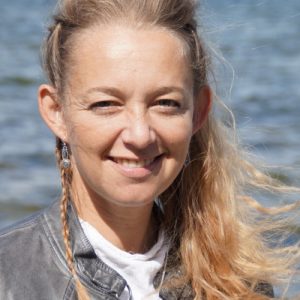by Emma-Jane Cross
Deep in the heart of Midwinter amidst the grey days and frosty nights, the winter solstice, also known as Yule, brings us new light and hope for the coming seasons. Which for our ancestors was, and I have to say it is for me too, one of the most healing festivals of the Wheel of the year.
Now you might be thinking why the heck is the Winter solstice, the shortest day of the year, important in this day and age? After all, light and heat is readily available to us, we don’t have to worry about survival. Who cares about a big star reaching the furthest point north from the celestial equator? Well, in my opinion, despite not living as our ancestors did, the Winter Solstice is the festival that continually connects our crazy modern world to the lives of our ancestors, the cycle of nature and our primal needs. Making celebrating Winter Solstice, quite simply, medicine for our souls and our mental health.
So how did I get from a star to mental health? Bare with. Most significantly the Winter solstice has remained embedded in the human psyche throughout history. From the dawn of mankind, it’s been honoured and celebrated across the world. And unlike other festivals on the wheel it has survived. In almost every culture folk traditions, superstitions and ceremonies have survived and been passed through the generations. Today we often talk about the commercialism surrounding Christmas, the descendant of Yule, yet if one looks back in time this time of year has always had a hype surrounding it. We have literally been celebrating it since at least 10,200 BCE, the late Neolithic period. It was so important to our ancestors that they went to the trouble of creating stone temples such as Newgrange in Ireland and Maeshowe in Scotland aligned to the winter solstice sunrise. No mean feat if you think of the technology of the day; certainly makes our yuletide shopping frenzy insignificant in comparison! Stone temples aside, the fact that Winter Solstice traditions and celebrations have survived for so long, to me suggests the shortest day fulfils more than a desire for presents and Christmas pudding – there is something primal going on that says we need a celebration at this point in the journey of the seasons.
From the celebrations throughout history from the Roman’s hedonistic festival of Saturnalia to the Viking festivities of Jól where King Hakon the Good made it a law to celebrate with beer and fined those that didn’t follow and drink, the pattern indicates that we humans, collectively as a society, have a need during mid-winter, more than any other time of year, to have a party and make some mischief. Think about it, what other time of year do we collectively come together in playful celebration? We don’t. Lockdown taught us many things about mental health, particularly that socialising is important for our mental health. In the winter, from Samhain on, we all have a tendency to be less social and withdrawn. The weather keeps us inside, preferably hidden under a blanket. The coming together social aspect of Yule gifts us the opportunity to come out of our isolated winter cave and see those that bring us joy. Giving us all the happy hormones of oxytocin, dopamine, serotonin, and endorphins. Hormones that are also produced by time spent in the sun and are considered to boost mental health. Now I am no neuroscience expert, more an enthusiastic neuroscience nerd, but to me logic dictates that in the social gatherings creating the much needed hormones we are missing in winter say that those social gatherings and Yuletide celebrations partially give us something, on a basic biological level: the need for optimal mental health that we miss during the winter’s darkness and isolation. And in that we are no different than our ancestors.
Well maybe I have sold it to you so far; if not I do have another reason that I view celebrating Winter solstice as medicine for our soul and mental health. And that is to do with hope. Winter Solstice is when darkness and night have reached their peak. Daylight hours are few and often miserable and grey, until the night of Solstice eve when the sun appears to stand still on the shortest day. The sunset at winter solstice marks the beginning of the longest night and the sunrise after, which for our ancestors marked the birth of the summer sun. From this point onwards, the days get longer. Now whether or not we feel it on a day-to-day basis, our survival is still based on our connection to the land through agriculture. Winter is not the growing season. And extreme winters and fewer crops equal a rise in food costs ergo inextricably linked to our modern-day financial system which is the very basis of our survival. In that we really are no different from our ancestors we need the coming seasons to be bountiful to make survival easier. Additionally, many people today are known to suffer from S.A.D and deteriorating mental health during the winter months. Even if we don’t take note of the winter solstice sunrise we do naturally begin to feel better after the Winter solstice as the days become longer and we have more light.
Our ancestors took the time to stand still with the sun and mark this important transition from dark to light. To give thanks and make offerings to the Gods for the new growing season approaching. Of course, we cannot know today if this had a positive effect on their mental health. However, I think we’d all agree we still have a primal need to know that things are going to improve and that food, and hopefully lots of it is coming, just as our ancestors did! I suppose what I mean is that in the darkness we all have a need for hope and a moment of gratitude for the light. For me, taking that time as my ancestors did to acknowledge the fact that after the winter solstice the light will return, and to give thanks, gives me the feeling of hope and joy that I assume our ancestors had at Yule. As life will return to the land and the darkness will not continue eternally. Hope, joy and social contact I truly view as the ancient medicine for our soul to be found by celebrating Winter Solstice and one I believe we humans will have a need for for as long as we walk this earth.
So I urge you to deck the halls, to be with loved ones and celebrate the birth of the summer sun this year and bring some ancient medicine to your heart and some hope to your heart. Because I think that is a Yule present we all deserve this year and every year.
MEET THE AUTHOR
EMMA-JANE CROSS is a spiritual coach and author specialising in creating spiritual connection with nature and the wheel of the year. Her roots are in Celtic and Norse traditions, from her Welsh childhood, her training in Shamanism, Druidry and Witchcraft at Avebury, and her work as Viking historical-interpreter within Scandinavian Museums. From her home by the fjord Emma-Jane guides people worldwide to rekindle a spiritual connection and personal growth journey aligned with nature’s seasons. She teaches workshops in Denmark and online at rerootcourses.podia.com and regularly speaks and teaches Celtic spirituality, earth magic and seasonal spirituality at events.
Bookshelf
Walking The Wheel Of The Year: Re:Root In Nature, Reconnect Your Soul by Emma-Jane Cross, published by Green Magic, paperback (210 pages).




